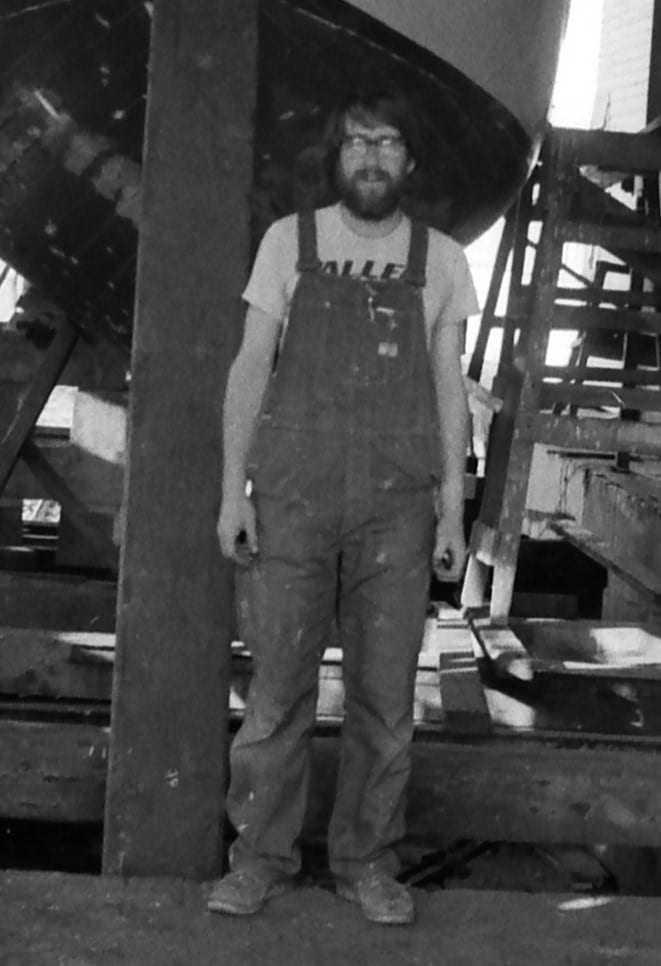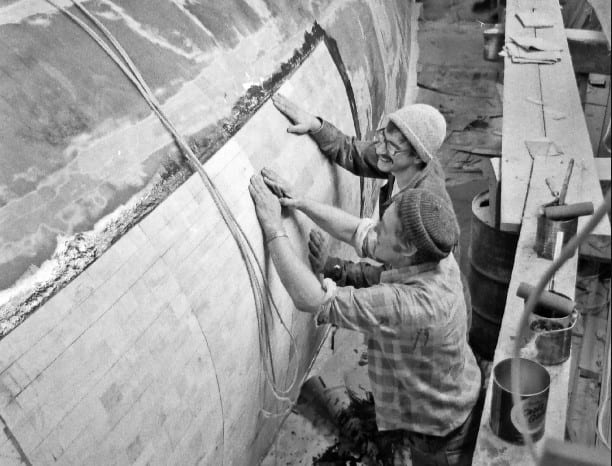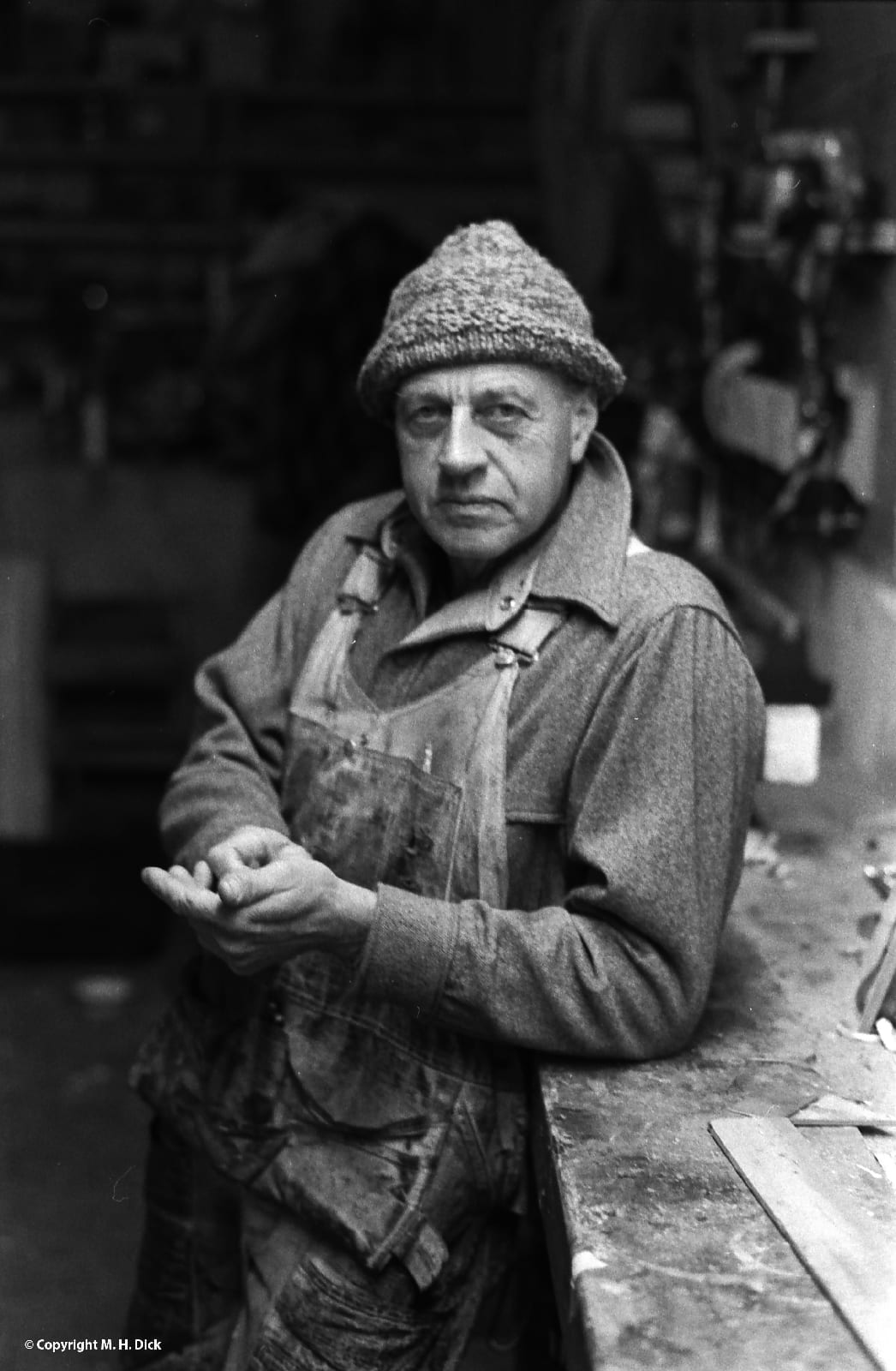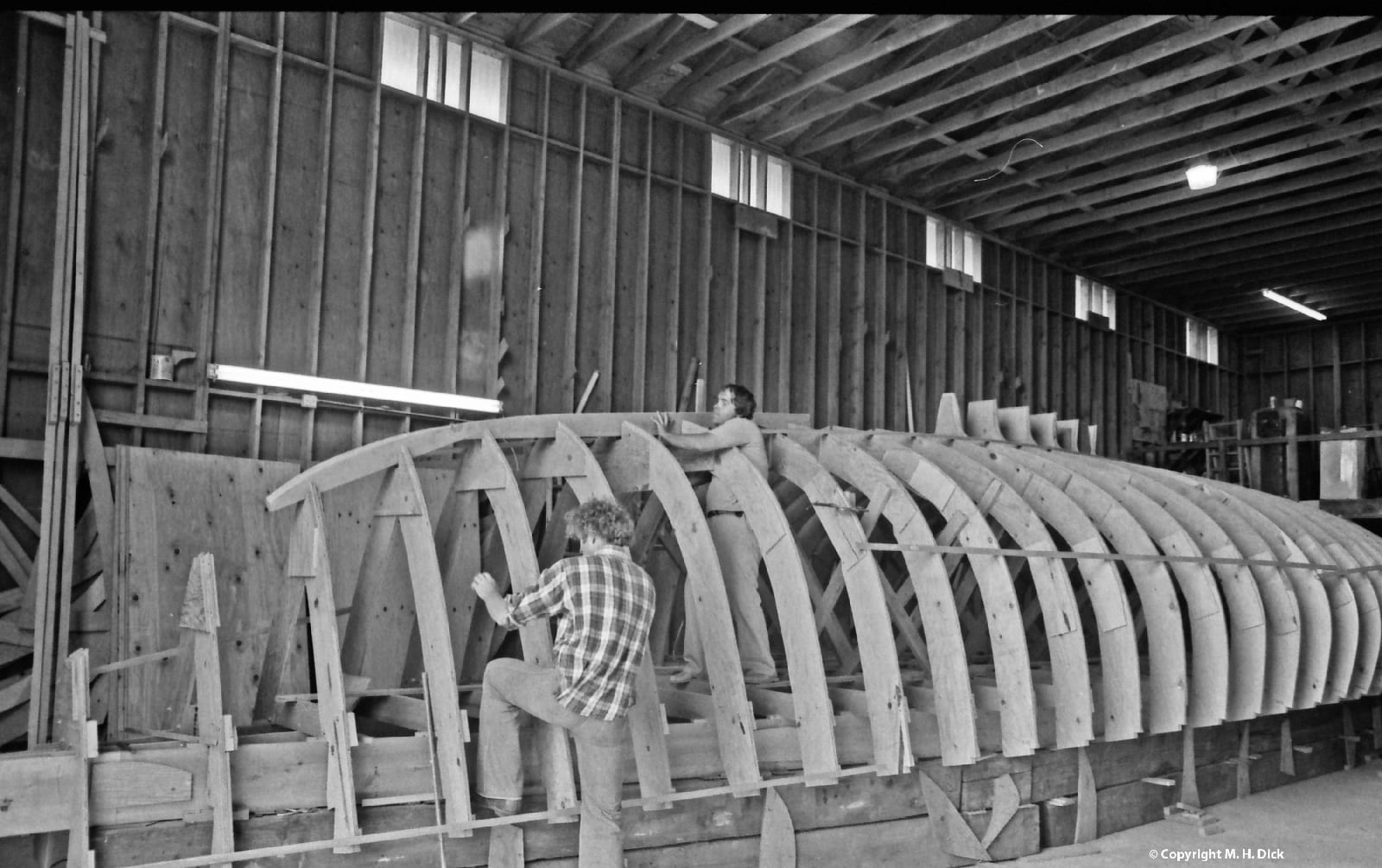By Spencer Bowman
Matthew Dick’s photographs chronicle the lively boatbuilding scene in the Puget Sound area through the late 1970s. During this time, there were around 35 independent boatbuilders in the South Sound and Seattle area alone. From fiberglass sailboat fabricators and wooden shipwrights to hydroplane builders. Matthew Dick's photographs allow us an insider's view of the workshops, projects, and individuals behind this industry during that time.
The unvarnished and unposed documentarian manner of his images lets us see how laborious, technical, complex, and demanding the work behind building a single boat is. For instance, take a look at the series of images documenting the building of the yacht Aquilla at the CLK Yacht Crafters boatyard in Tacoma. The photos show us the dusty, gritty, and exacting work these builders undertook. You'll see workers perched on plank scaffolding, working hard sanding, clamping, and gluing various parts of the hull. This isn’t to say that the people involved in building these boats didn’t also have a good time. There are quite a few images of the workers hamming it up and joking around for Matthew’s camera.
The other major portion of this collection is the photographs he took during the 19 months he spent at the LH Bates Vocational Technical Institute’s Boat Building Program from 1977-1979, or as he puts it, "The Harvard of boatbuilding schools". (*) There he studied under legendary boat builder Joe Trumbly. Matthew was initially exposed to boats way through biological fieldwork in Alaska. "The decade between my leaving home and arriving at Bates Voc was a random walk leading from absolutely no interest in boats to an interest strong enough to drop everything else to learn to build them. ... I was at first indifferent to boats, then afraid of them, then learned to use them, and then repaired one for my employer. Finally, I bought and repaired a derelict boat for myself." (*)
This course, and specifically Joe Trumbly, had a profound effect on him and his fellow students. “Trumbly’s training program was the most intense educational experience of my life and the things I learned from him in addition to boatbuilding served me well – his absolute top-quality work, his approach to problem-solving, his willingness to discard tradition when he found something better, his nature as a showman, and his passion for his field of endeavor.” (*)
Joe Trumbly started at Bates in 1955 with a varied background. He was a ship welder in World War II and a lead man in boatyards during the last years of production of wooden boat building. He designed and cast his own propellers and invented his own boat-building tools. Matthew goes into extensive detail about Trumbly, the boat building industry, Bates boat projects, and the many characters Matthew met during his time in Tacoma in the late 1970s in The Trumbly Show. His book is currently on order for the library and available here for purchase.
During the process of adding his photograph collection to ORCA, I reached out to him to ask him some questions about his experiences for this blog post.
Have you always been a photographer? What made you decide to document this specific subject matter?
Matthew: Starting in my late teens, I began taking photographs of things that interested me wherever I went, but most photos were in 35 mm, color-slide format. In 1976, I began doing freelance journalism for the Kodiak Daily Mirror and National Fisherman, and at that time switched to black-and-white, 35 mm format (400 ASA). I photographed boatbuilding in Tacoma for several reasons. First, I wanted the potential to use the photographs in freelance articles and, not knowing quite what would prove useful, recorded everything I could, including people. Second, I wanted to document the technical details of boatbuilding for my own future use. Finally, I had the sense that I was seeing the tail-end of the West-Coast production wooden boatbuilding industry and wanted to document what I could of it, for example, with photos of Joe Trumbly and John D. "Johnny" Martinolich.
Now that your collection is online and accessible, what do you hope people take away from these photographs?
Matthew: This is a tough question because different people will take away different things. The photographs show masters of the trade like Joe Trumbly and Johnny Martinolich at the ends of their long careers, and illustrate the sorts of things they knew. In my opinion, wooden boatbuilding began to decline not because no one wanted wooden boats anymore (although for commercial and some sport purposes, fiberglass, and metal boats are arguably easier to maintain than wooden ones), but due to the increasingly high cost of boat-grade woods. In 1977, prices for clear, vertical-grain, air-dried boat lumber were still moderately low, and students could afford to build their own wooden boats, Trumbly could afford his Osage and Windance, and companies like Jones Goodell still had orders for large wooden yachts. This prevalence of fine woods comes across in many photos ... for example, 43-10 and 43-16 show the stack of around 20,000 board feet of Port Orford cedar Trumbly ordered for Windance, and 37-15 shows a big chunk of Honduras mahogany for Windance's keel. I would guess that the high current cost of boat lumber reflects changes in forests and forest ecology worldwide.
The photographs give a sense of the technical complexity of boatbuilding and emphasize that the same principles are used in multiple construction media... wood, fiberglass, and metal.
Finally, the photographs show the importance of vocational training under the apprenticeship model in whatever industries need trained workers. Bates hired excellent instructors and fully supported the boatbuilding program when there was still a high demand for trained boatbuilders. There is still a need for people who know how to build boats, but apparently, the cost-benefit ratio changed enough that Bates terminated the program, possible to devote resources in other directions, like the computer industry. Nonetheless, the photographs illustrate in general the dynamic aspect of well-run, hands-on vocational training. I should note that there are other ways to learn boatbuilding: Joe Trumbly and Johnny Martinolich learned on the job, and the Knapps taught themselves boatbuilding.
We are excited to make these digital images available publicly. You can browse all of Matthew Dick's images by clicking here.
Please reach out to us if you have any questions by phone at (253) 280-2814 or send us an email at NWR@tacomalibrary.org
(*) Dick, Matthew H. The Trumbly Show; A Narrative of Training Under Legendary Boatbuilder Joe Trumbly. Sapporo, Japan: Lulu Publishing, 2022.






